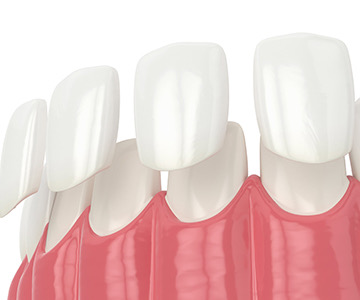Missing teeth are no longer a problem! Dental implants offer the most advanced, durable, and natural-looking solution for restoring your smile. An implant, together with its crown, mimics a real tooth both aesthetically and functionally-helping you regain confidence, comfort, and a complete smile.
To book a visit, sign up for a consultation. To clarify the details, our operator will contact you.

The History Of Implantology Development
15 June 2023
The history of restoring a missing tooth and replacing it with an implant begins with the discovery of the Swedish scientist and researcher Per-Ingvar Brånemark. In 1967, after 15 years of clinical research, Ingvar Bronnemark discovered that it is possible to implant titanium implants into human bone tissue without side effects. This discovery laid the foundation for the development of the method of dental implants. Professor Branmark presented his findings to the general public at a conference held in Sweden in 1968, and it was from this period that he started treating adentia (toothlessness) by fixing titanium screws into the jawbone.
The History Of The "Discovery" Of The Implant
Since 1965, Ingvar Bronnemark has studied the ability of bone marrow and bone tissue to regenerate after injury. In order to study the blood circulation in the bone tissues, the professor surgically attached a mini optical camera to the femur of Rabbit. The scientist, taking into account the resistance of titanium to chemical effects and corrosion, and due to the advice received from colleagues, made the camera from titanium. At the initial stage of the trials, the first "coincidence" that caught Brannemark's attention was that the titanium chamber had become lodged in the tibia of the Rabbit and could not be removed. It was this "miraculous healing" that laid the foundation for modern methods of tooth implantation. Despite these successes, dentists at advanced European institutions met the innovative discovery with skepticism, especially because Bronnemark was not a dentist by profession. In short, for many years, Professor Bronnemark faced only sharp criticism, so there was no talk of using the discovery in practice. The final point was put to baseless criticism and mistrust in 1982. It was at this time that the Canadian scientist George Zarb learned about Bronnemark's research, whose main activity was the study of artificial roots of teeth. George Zarb immediately went to Sweden, conducted research with Professor Bronnemak, and he agreed to entrust his discovery to the world scientific community. For this, Zarb invited Bronnemak to a dental conference in Toronto. Brønemark was so discouraged by the criticism of his European, and especially Swedish, colleagues that he initially did not want to speak at the conference and show everyone the importance of his discovery, moreover - Zarb, at his insistence, personally invited many famous scientists to this conference so that they would have the opportunity to listen to Brønemark and get to know him. to his invention. During the course of the conference, it became clear that it was a truly phenomenal discovery that would forever change the future of implantology and dentistry in general. During the conference, dentists in more than 10 countries of the world were immediately engaged in the study of osteointegration and its implementation in medical practice, scientists and dentists of various profiles were immediately engaged.
Implant And Implantology Today
Today, in addition to filling the empty space in the place of a missing tooth, one of the main advantages of a dental implant is that it looks like natural teeth and blends harmoniously with the patient's mouth. A ceramic (porcelain) crown attached to a metal screw fully reproduces the color and gloss of a natural tooth, that is why it is impossible to distinguish between a natural and an artificial tooth with the naked eye.
A modern style implant consists of three components, namely:
- An artificial titanium root that integrates into the bone;
- an implant abutment connecting the artificial crown to the titanium artificial root;
- A crown that visually resembles a natural tooth.
In addition to eliminating visual defects, the replacement of a missing tooth with an implant plays an important role in maintaining the general health and hygiene of the oral cavity, because implants along with the visual effect improve the function of the maxillofacial system and prevent the accumulation of food residues in the place of the "missing tooth".
Blits Dental - Kakhaber Kharebava clinic recommends using the latest achievements and discoveries of modern dental science, replacing a missing tooth with a titanium implant and enjoying a charming Hollywood smile for as long as possible.
To book a visit, sign up for a consultation, and to get detailed information about the terms of dental installments, contact us at: (+995) 322 22 15 16
During pregnancy, hormonal changes can cause gum inflammation, bleeding, enamel erosion, and an increased risk of cavities. That’s why visiting the dentist during pregnancy is especially important.
Gnathology is one of the leading branches of 21st-century dentistry. It forms the foundation for any complex dental treatment planning
Tooth loss (edentulism) affects not only the appearance of your smile but also the overall functional health of your oral cavity
Dental veneers can be made from various materials, but ceramic (porcelain) veneers are the most widely used.
Modern aesthetic and functional dentistry is continually evolving, striving to identify restorative materials that combine exceptional strength
The eruption of baby teeth is one of the most important stages in a child’s early development.
Modern dentistry increasingly emphasizes the importance of orthodontic care.
Oral health care begins long before the first permanent tooth erupts.
A smile is one of the key elements of a person’s visual identity. It conveys confidence and positivity. However, the beauty of a smile is not only an aesthetic factor—it is directly connected to oral health.
Orthodontic treatment has long gone beyond the limits of traditional metal braces.
Dental implantation is the best method for restoring missing teeth. However, for the procedure to be successful, the jawbone must have sufficient volume and density.
Dental implantation is one of the most effective and safest surgical procedures in modern dentistry for restoring missing teeth.
Initial endodontic (root canal) treatment is usually successful and helps preserve the natural tooth.
Root canal treatment, also known as endodontic therapy, is one of the most frequently discussed yet often misunderstood dental procedures.
Tooth decay is one of the most common dental conditions, involving damage to the hard tissues of the teeth
Modern dentistry is constantly evolving, offering improved methods for solving complex issues.
Today, there are numerous teeth whitening options—both at home and professionally done.
Modern dental clinics are equipped with special equipment that ensures the safe use of anesthesia.
















.jpeg)

.jpeg)
